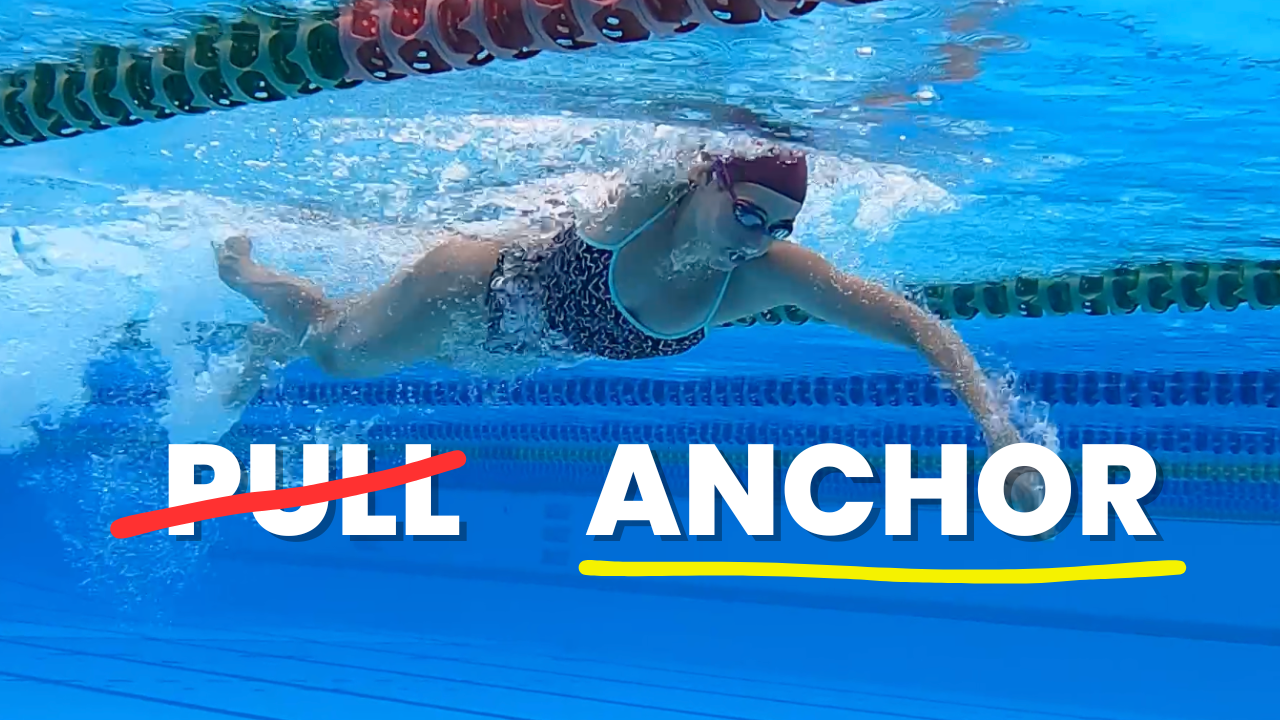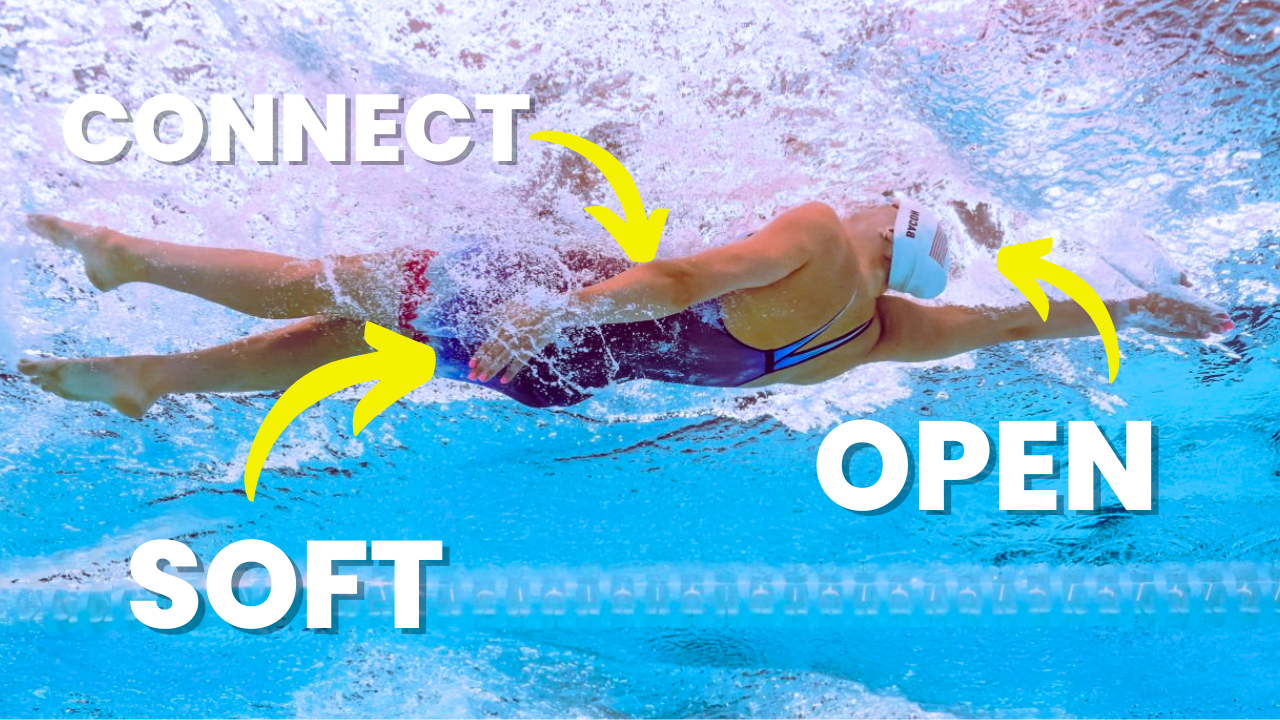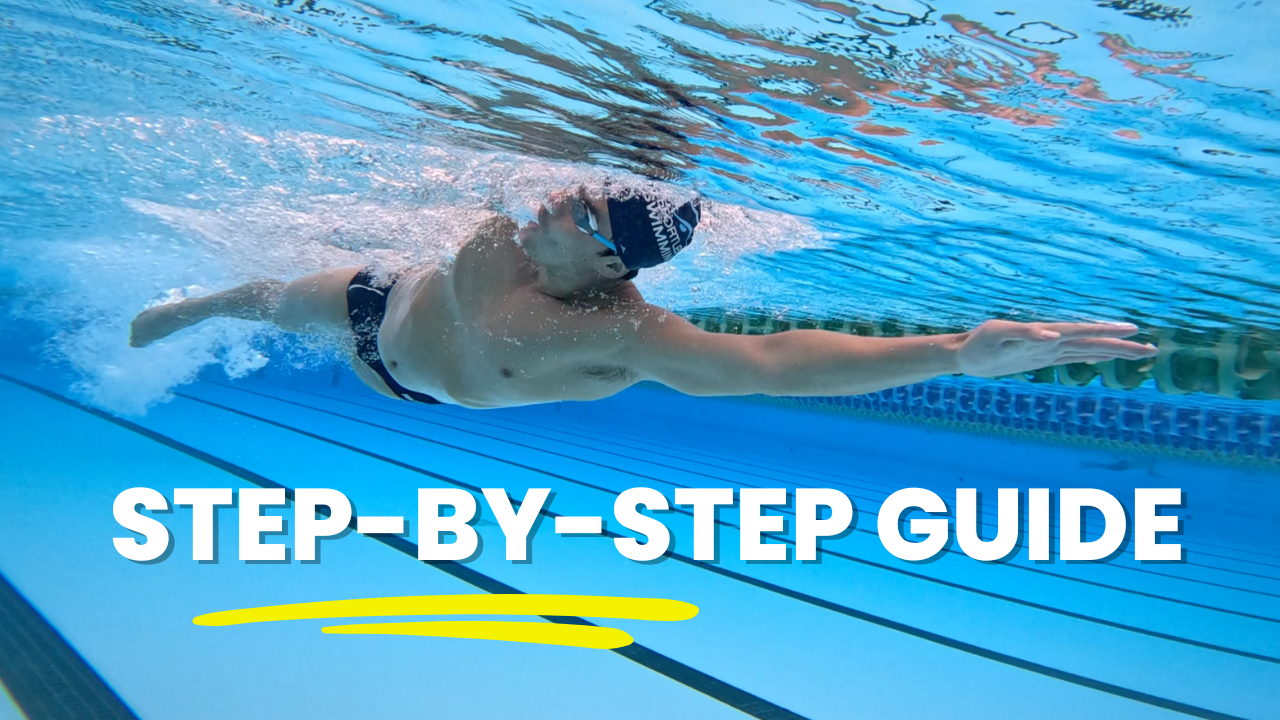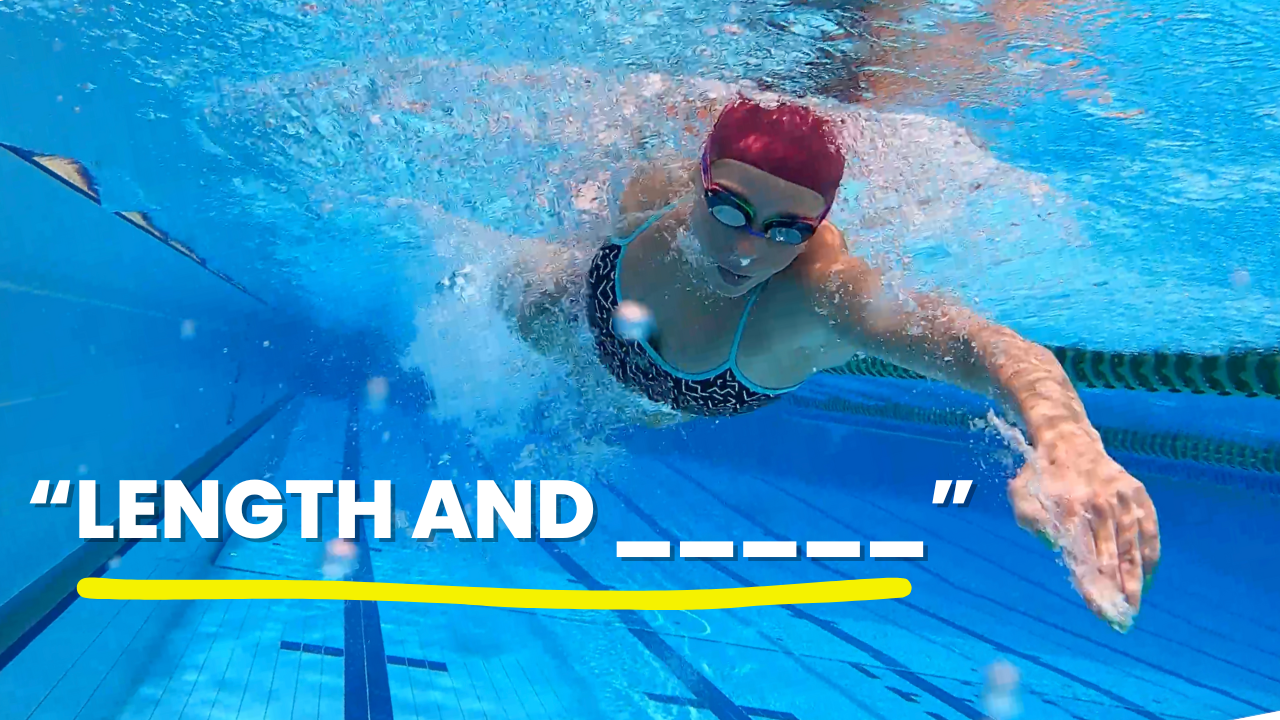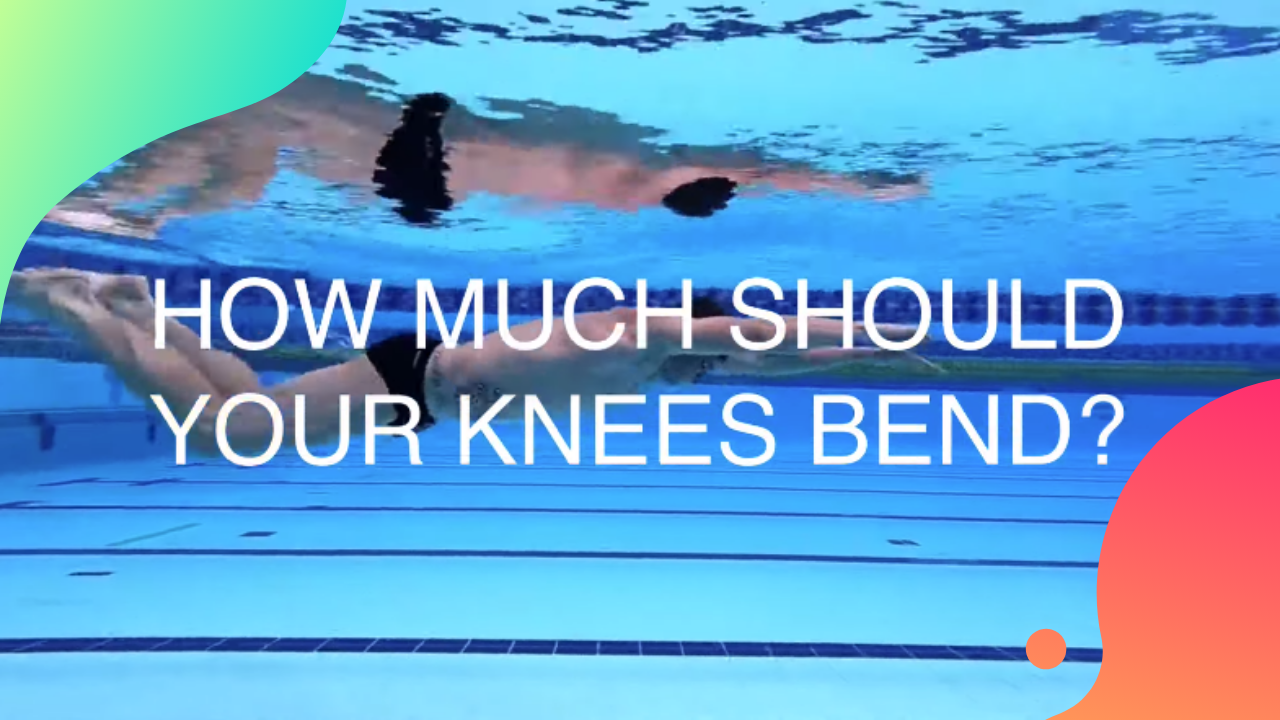Last year I did a video analyzing my own stroke where I picked out a number of things to work on. After 12 months of practice, have I been able to improve? The pace in the video is 1min10s/100m which is my 1-2km open water pace. The side-on footage is with a 64 stroke rate. The other footage is with a 75 stroke rate which is closer to the stroke rate I’d use in open water because I find it easier to maintain that type of stroke in the ocean. This video was recorded in Thailand on our Hell Week swim camps.
Transcription:
Last year I recorded a video where I analyzed my own stroke. There’s a couple of things that came out of it where I’ve been working on them for the last 12 months so I’ve now got an updated video from those couple of things that I was working on 12 months ago.
Now, this footage was recorded at our Thailand Swim Camps, our Hell Week Swim Camps over there. The footage previous was recorded at the same camp but a year before it so it’s basically 12 months difference there. The first footage was this one here which you might’ve seen in the previous video. One of the things that I was working on was getting rid of the crossover so both hands were crossing into the center a little too much. Particularly, you can see that left one just coming into the center, and then the right hand, the same thing, it was just crossing over a bit too much.
What that was causing in front was the hand just to stay up a little too high for a little too long, and what we call putting the brakes on and just creating extra drag on the forearm there. Ideally, we want to try and get this hand down to about shoulder depth or underarm depth and then we really reduce the drag and that puts us in a much more efficient position. Mostly because of that crossover, my hands were staying too high for too long and the drag was just more than what it needed to be.
That was one of the first things I worked on. You can see in this footage here, for the most part, I’m on those train tracks if we imagine train tracks running in line with the shoulder, and we want to enter there and extend straight forward. For the most part, hands are entering on those train tracks, much better line through there, as opposed to the crossover.
Now I don’t mind if you get close to the center, we just really want to try and avoid it, avoid actually crossing the centerline, so with both arms it’s pretty much there. Sometimes on the breathing stroke, it does come across a little bit too much so I could go a bit wider there but, for the most part, it’s where we should be. Now, in order to change it I had to make it feel substantially wider than what would feel comfortable for about three weeks, that’s how long it took to make it feel normal and comfortable, but like anything out in front of the head, anything that happens out here you usually need to exaggerate it to change it because if you try and change it a little bit it doesn’t really happen.
Knowing that I just made it feel like I was super wide for a couple of weeks. I still need to make it feel fairly wide in order to keep it there but it’s a much, much better position because as you can see the depth of the hands now is a lot better. It doesn’t stay up … Play it here from the beginning. It doesn’t stay up anything like it was before so you can see that right hand pretty much straight away gets to that shoulder depth. Left one, the same thing, pretty much getting there straightaway now. It’s really just because of getting rid of that crossover.
If you know that your hands do come up and you put the brakes on, just check if you are crossing over because that’s often one of them, that’s the most common cause or one of the most common causes that we see causing you to put the brakes on there. That was the first thing. The other thing that I was doing was on my right-hand side on quite a few strokes I was pressing down … Sorry, my left arm, sorry my left arm, I was drifting down with my hand and keeping it too straight for too long so I was missing the first part of the catch here, I’ll show you in this video.
On a lot of strokes, this was happening. You can see how that arm stays pretty much straight, it’s pressing down, pressing down. I only really started to get the catch, sort of getting it here. Even then, you can just see how the hand was sweeping under the body and not in a great position there. Wasn’t every stroke but particularly on those breathing strokes that was happening. I’ll play it through a bit more. Yeah, on a lot of these strokes it was really just drifting down.
I wasn’t getting much, I was not getting much out of that left arm on a lot of strokes here. Now part of that was because I was over-rotating through my shoulders and taking too long to get the breath here. You’ll see how my head’s kind of hanging out for a while, eventually turn it back there but it’s a little bit of a delayed bit of a pause there. If you look at the breathing there, just taking too long. That was a big cause of why this arm was just drifting downwards, missing part of the catch.
Now it’s not the worst thing that can happen in the stroke. It’s not slowing me down too much but there’s a lot more propulsion, a lot more propulsion available thereby improving it. That was one thing that I worked on was just knowing that I was over-rotating on that side. I tried to reduce that rotation a little bit and starting to get that catch a little bit earlier. You can see how that’s a much better position to them being … I’m starting to set up the catch a lot better here so more surface area with the forearm and the hand compared to what it was.
I’ve been able to improve that quite a bit and I’ve noticed a good improvement in the speed from that as well. The other thing that’s helped with that is I’ve been working on not trying to overpower the stroke. You can actually go a lot faster when you’re swimming if you’re just trying to maximize the contact time with the water. Think of that as your hand and your forearm, keeping that pressing back against the water and not looking to rush it at any stage.
If there’s any point where you’ve slipped through the water then you’ve lost that pressure, you’ve lost that contact time, and it’s actually going to be slower than if you just gradually build up the speed and accelerate through the stroke there. You can see it here coming through, just not trying to really muscle your way through it. That’s one thing that we worked on a lot with the swimmers at hell week was that just maintain that contact time, you’re going to be a lot faster than trying to pull a lot faster where people just always end up slipping there. That was one of the major things.
The other thing that I was working on as well, my right hand had a tendency, my right wrist had a tendency to bend a bit too much. You can see how much the wrist bends. Now, it’s okay to have a little bit of a bend there to initiate the catch. It’s not too bad but too much wrist bend here, it starts to straighten out here, which is good and that’s a good position but it was a bit too much wrist bend for a bit too long. I was trying to just keep that forearm and hand together as it moves through the catch.
You can see here on this stroke, I want to just get a better shot of it. See how it’s … That’s a lot better there where the wrist doesn’t really bend as much at all. There’s still probably a bit too much here but once I get to that press phase or starting the pull, it’s together which is the main thing there. That’s started to improve quite a bit.
Now in terms of how this has impacted my speed, over the last couple of weeks, I like to repeat sets and those couple of things have really helped me be able to sustain a faster pace for longer. It’s a little bit less effort and the speed has been a bit faster than usual. There’s a set that I normally like to do, it’s six 200s. Well, I used to do six 200s leaving on 235. Last year around January I did six 200s leaving on 230, coming in on two, what was it, 220.
Just recently, just the other week I went 10 of those on 230, coming in on 220. I was able to hold that pace a lot easier and a big part of that was just the change in technique so that’s certainly made a difference. Now, a couple of things that I noticed here that I’ve been working on since as well, I think there’s a little too much compression through the spine here on a few of these strokes. I have this tendency to be quiet, I have quite a loping stroke, especially in this one here, it’s probably more evident in this one, where after I take some strokes I tend to compress my chest a bit here and the eyes were coming up.
Now again, it’s not a major thing but I was just finding that I was getting a little bit stuck under the water and it was impacting my recovery. What I’ve been working on lately after watching these videos is just not trying to sink my chest down too much through here, just basically trying to keep the shoulders out of the water a little bit more and and not push the chest down and and have too much of an arch through the upper back there. Just practicing that in the last couple of days it’s been feeling pretty good so it’s something that I’m just going to continue to experiment with.
Now, the other thing that I’ve been working on is the recovery. In the recovery, one of the things that I’ve probably come to do a bit more of since I’ve been open water swimming for the last roughly, mostly 10 years, I used to be pool swimming primarily where I had a higher elbow recovery and so on. Over the last 10 years, I’ve come to much more of a straighter arm recovery. I think a straight arm recovery can be very good for open water, but I’ve been leaning towards too much of a handled recovery where the hand leads the elbow through this part of the stroke.
Whereas what we want to try and do instead is have the elbow lead the way a bit more. If we were to look from above here, what we’d want to see generally is we want to keep that elbow in front of the hand until about halfway here, which is what you’re seeing here and that’s because I was practicing it here. Usually, and you might even see it in this one, the hand has a tendency to lead the way so the hand swings in front of the elbow just a bit too early on in the stroke.
Speaking to one of our coaches, Gary [Herring 00:09:38] from New Zealand, excellent pick swimmer and Olympic coach, he talks about you want to lead with the elbow so the elbow stays in front of the hand up until about here because he feels like it gives you just a little bit more load on the shoulder and on this arm out in front when you do that. Whereas, if the hand swings in front then it just puts the shoulders in a position where you can’t quite get as much out of the stroke out in front there. I think that’s pretty accurate. I think that’s a big reason why you’d look to make that change.
That’s one of the things I’ve been working on. In this shot here I was coming over the water quite wide, quite straight. This is how I’d normally race open water. What I’m just going to just play around with a little bit is to come or work towards a slightly more elbow led recovery where the elbow stays in front of the hand a little bit longer. Yeah, I don’t mind a high hand recovery on one side, it’s pretty common, especially for open water, but it’s really just that right hand that was probably swinging around a little bit too low and the elbow wasn’t quite leading the way. That’s one of the next things that I’m looking to work on.
Now in this video here, this was just a push 100 where it felt about 80%, 85%. It was 110 pace, long course there. The thing was, my stroke rate here is 64 strokes per minute and that’s not what I would do if I was racing. If I’m racing open water I’m going to be around 75 strokes a minute so this is actually, it’s like … I’m using the analogy of gears. Imagine you’ve got five gears, and you’re thinking like a bike, this is like the big gear. This is the fifth year where I’m putting in quite a bit of force, quite a bit of power in order to drive that gear around but it can be quite a bit more tiring.
Whereas, if you shift down to fourth gear you can just keep the legs spinning over. Or, in this case, the arms and the strokes ticking over. Here I’m around, in this shot here I’m around 75, 76 strokes per minute and that’s closer to what I do when I’m racing open water. The pace is about the same in these two but this is actually a bit more sustainable for me when it comes to open water swimming because while this one looks a lot easier and the stroke rate is lower I’m having to put in a bit more, a bit more power in order to hold that time and that pace.
What I’d be looking to do, I’d train this fifth gear because it helps to train those big and powerful strokes. It helps to train that way but you also want to be able to shift down gears to that fourth gear instead of the fifth gear so when it does come to doing a set where you might be, 2k’s, 3k main set, it can help to be able to sit in that fourth gear and just comfortably keep ticking over.
When I’m doing a longer distance set where I’m looking to practice race pace, I’ll actually do it with this speed, with this mid-seventies stroke rate. If I’m doing anything where it’s a bit more of a controlled effort or I’m descending in effort, I’ll try and keep the stroke rate that little bit lower and just work on that distance per stroke. It’s good to be able to do the two. I just want to make that distinction there because it does make a difference being able to sit at that lower stroke count and slower stroke rate because that’s a great way to know that your technique is really good.
It means when you’re racing you’ll probably start to increase the rating a little bit and you’ll just work more with your rhythm and your timing and just have a bit less power through each of those strokes there. I hope you enjoyed this video. Let me know what you’re working on in your own stroke in the comments below, I’m always curious as to hear what people are working on. I know that we talk a lot, or I talk a lot about all the different things that you can work on in your stroke but keep it simple.
For me, I’m really working on one thing at a time, sometimes two, but usually just one thing at a time. Even being a coach and working on this stuff full-time, it’s very hard to do more than two things at once. Just keep it really simple and I’m curious to hear what are you working on. Thanks for watching and I’ll see you next week. Please like and subscribe if you did enjoy this video and I’ll see you soon.


